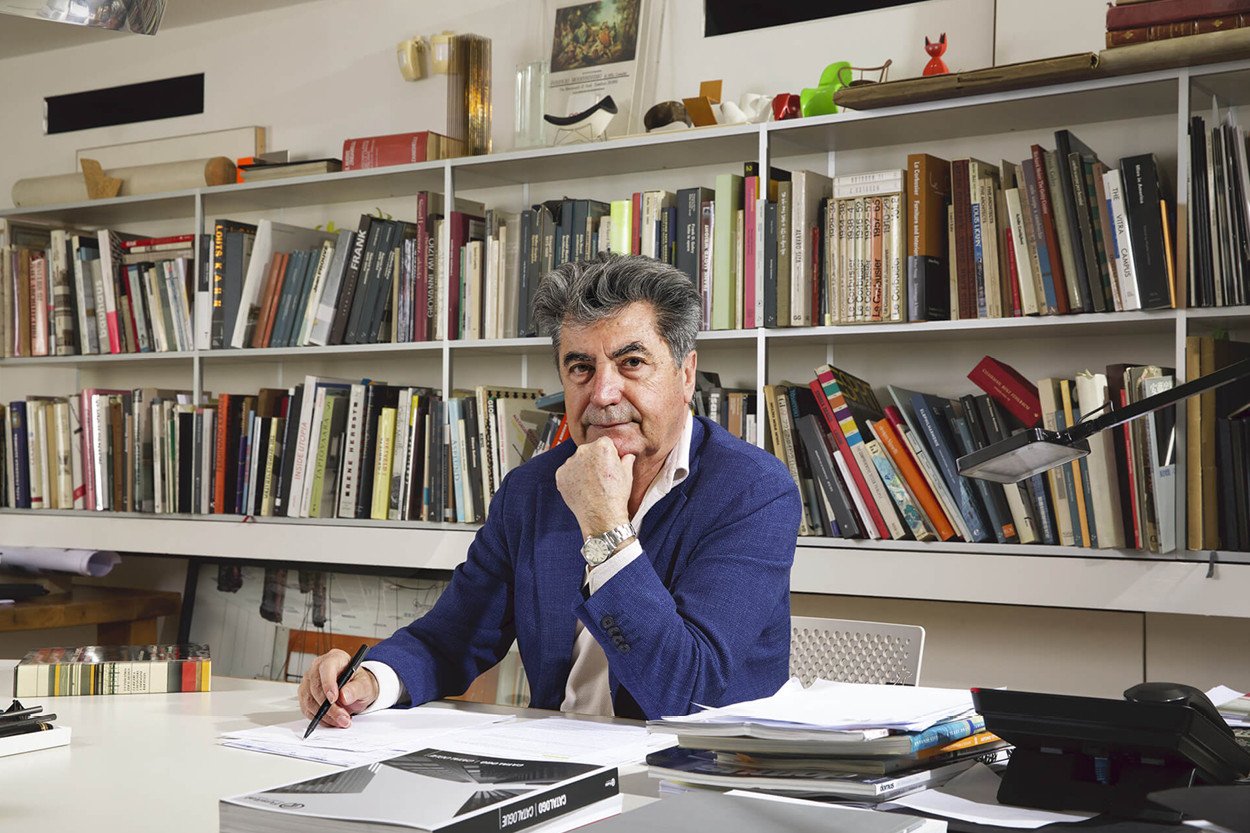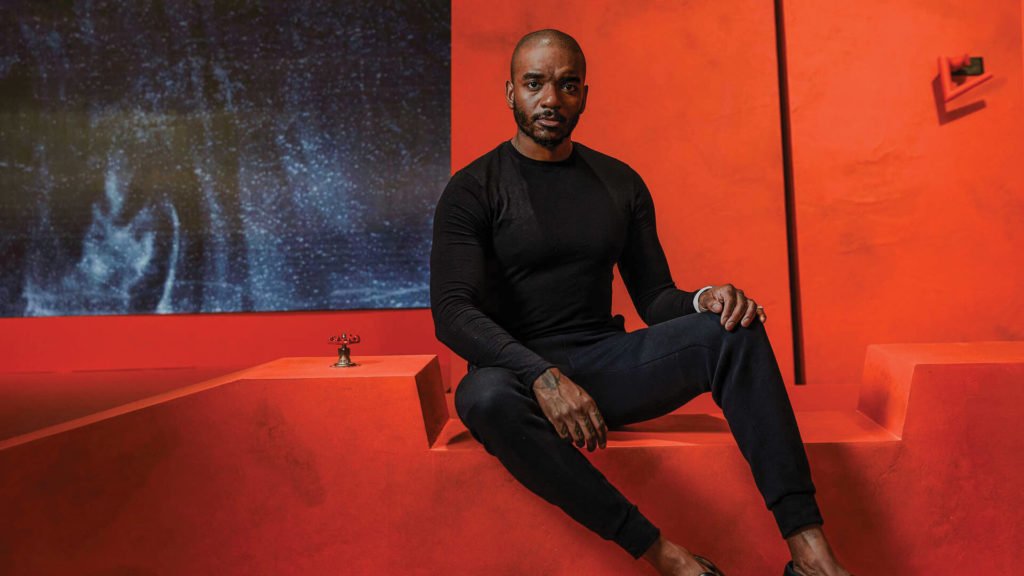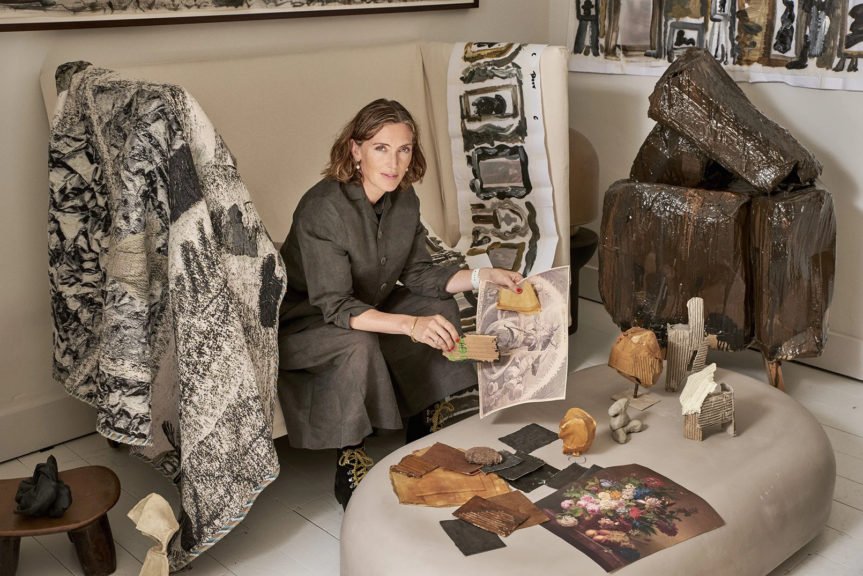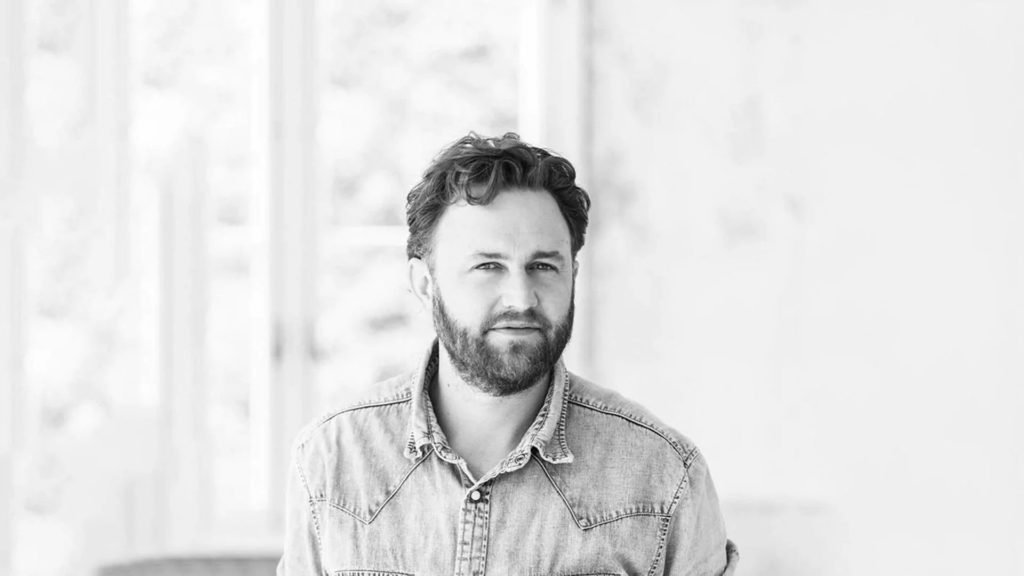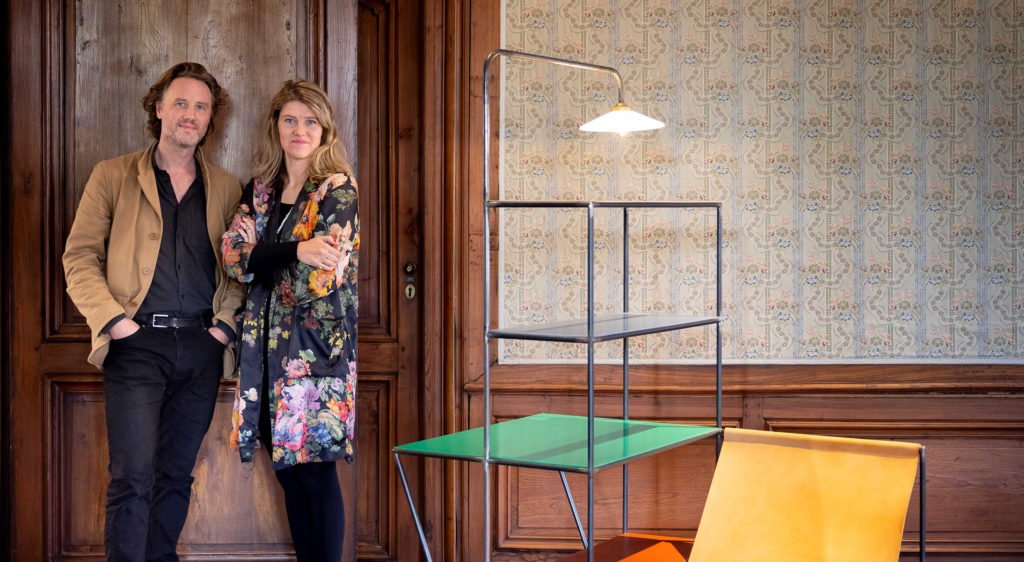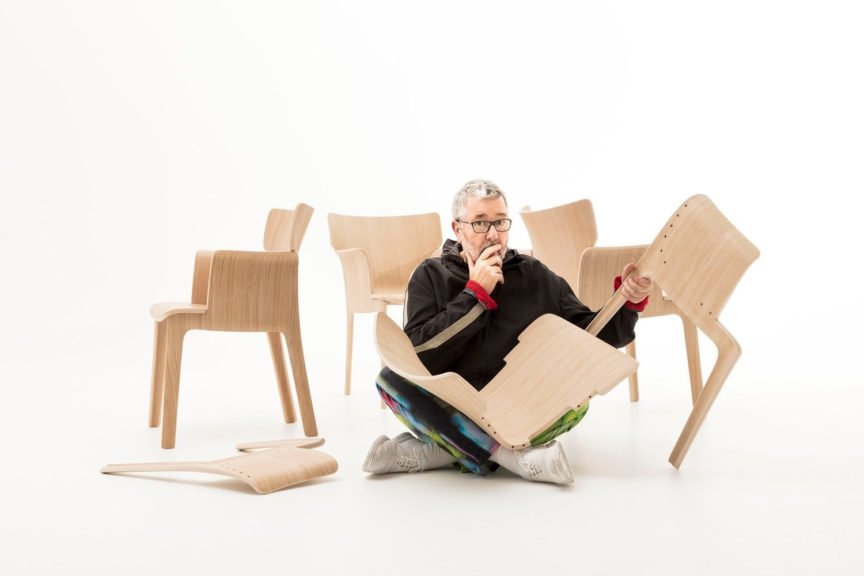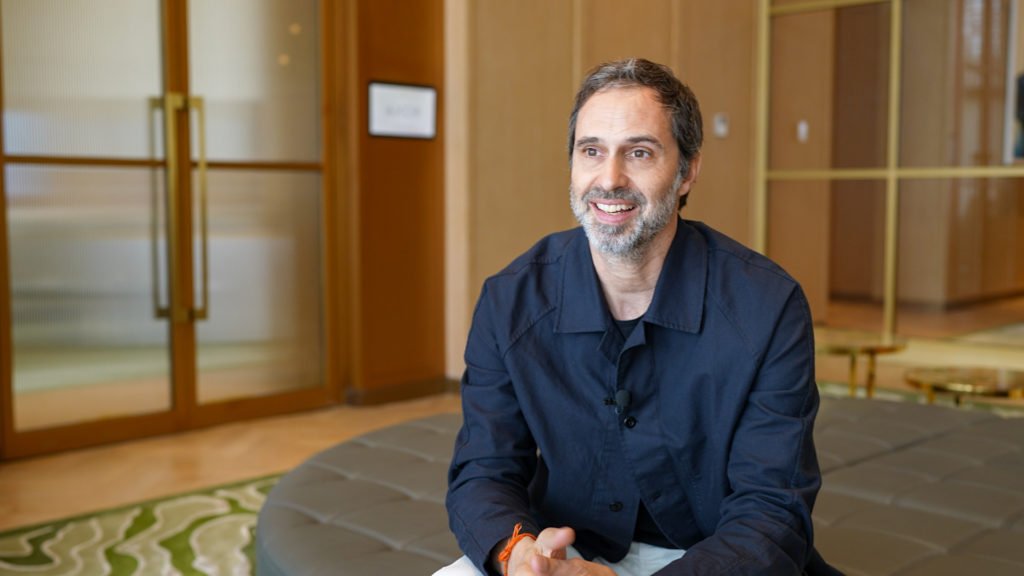Prolific designer Antonio Citterio was alien to the world of bathrooms when he first met with AXOR. As he narrates his first meeting with their team, he can’t help but issue a fair warning. “It was a foolish thing to say,” he says, his eyes gleaming in nostalgia and a faint yet fond smile gracing his lips. “I asked them why a spout has to be round. Why can’t it be square?” he chuckles lightly. Unknown to both sides, that would be the start of a 25-year partnership and the idea behind the AXOR Citterio Collection, followed by the AXOR Citterio E Collection, then the AXOR Citterio M, and now, finally, AXOR Citterio C.
A well-known name in the global design fraternity, Antonio Citterio is a multifaceted designer shaping the built environment focused on shared well-being. An architect by vocation and profession, Antonio is also highly invested in interior design, urban design, and product design. Adeptly helming his firm Antonio Citterio Patricia Viel, this avante-garde designer has a penchant for shaping the present while looking at the future. Antonio’s projects are influenced by their context and the nuances of nature. While doing so, he incorporates technology to produce future-relevant and unique designs.
Antonio Citterio with Love That Design C0-Founder, Siddharth Peters at AXOR’s Studio in Milan
Education and Early Career
Antonio’s journey in design began at the Polytechnic University of Milan, where he studied architecture and graduated in 1972. During his formative years, Citterio was influenced by the modernist design ethos prevalent in Italy, which emphasised functionality, minimalism, and elegant aesthetics. This foundational education laid the groundwork for Citterio’s future career trajectory, shaping his approach to design, characterised by a harmonious blend of form and function.
Early in his career, Antonio collaborated with prominent design figures such as Terry Dwan and established his studio in 1999. Terry’s impeccable skill with geometry and an understanding of ergonomics enabled Antonio to collaborate with leading furniture brands such as Vitra and B&B Italia. At the start of his career, the most iconic pieces include the “Charles” sofa and the “Husk” armchair, depicting thoughtfulness and elegance. Antonio’s commitment to moulding the designers of tomorrow also encouraged him to work as a design faculty at the Accademia di Architettura di Mendrisio in Switzerland from 2006 to 2016.
Top (from left to right): Charles Sofa; Husk Armchair
Bottom (from left to right): Antonio Citterio with Terry Dwan; Casa Antonio Citterio e Terry Dwan
Leading with Quality and Collaboration
Antonio emphasises using highly rated materials and underlining the importance of quality in the final output. He mentions, “Quality design enhances the functionality and usability of a product while also elevating its perceived value.” Further, he states, “Giving attention to detail, material selection, and craftsmanship contribute to a product’s durability and reliability, ultimately leading to better client relationships”. Standing true to his work, Antonio considers high-quality design not just about creating products; it’s about creating experiences that resonate with users and stand the test of time.
Reflecting upon the importance of collaboration in design, Antonio recognises the role of teams and interpersonal relationships in building business longevity. Bringing the limelight on his nearly two-and-a-half decade-old association with AXOR, Antonio says, “Design is a story of a family. Companies that tend to follow this approach tend to have a better understanding of how people use their space. This helps in adding more meaning to the design.”
“Design is a story of a family. Companies that tend to follow this approach tend to have a better understanding of how people use their space. This helps in adding more meaning to the design.”
– Antonio Citterio
He believes having a shared long-term vision is the key to developing a successful design practice. AXOR is one of the partnerships Antonio has forged over the years. He believes that working with teams over decades instils a sense of kinship, which in turn nurtures an allegiance to the bigger goal of designing better.
Antonio confesses that having a handsome investment amount helps. “AXOR has an impressive budget to put into research. The final result of Citterio E is a good example. Only because of the expert engineering team, who were able to come up with a more compact cartridge, which wasn’t available for 20 years, were we able to deliver a spout that was that thin.”
A few anecdotes later, he dutifully reminds those around him that collaboration is not solely about what the designers want. “I like to talk, I like to listen, and I want to know more about the technology they [AXOR] are experimenting with. That is also important.”
Citterio E by Antonio Citterio for AXOR
“No Touch is Casual” and the Environment is Important
If there is something a product designer focuses most on after utility, it is user experience. Antonio’s philosophy is four simple words: “No touch is casual.” He has no qualms about accepting that he has spent days deliberating over the signage of a shower handle.
Environmental considerations such as water consumption also concern Antonio. For his collaboration with AXOR in 2027, he is self-acceptingly ‘demanding’ with the engineers. “The idea is to consume less water for showering, but the user must not feel the scarcity”, he shares.
The latest Citterio C by Antonio Citterio for AXOR
“There is always a back and forth between the brand and me. Whether about the prototypes or even a five-millimetre detail, it [the design] needs to be timeless and efficient.”
– Antonio Citterio
Accenting the importance of sustainability, Antonio quotes, “Rather than succumbing to fleeting trends that change every few years, it is essential to focus on what is universally important—the environment. Therefore, it is crucial to design solutions that depict oneness with nature and do not become obsolete.”
Building in coherence with nature enables him to create spaces that positively impact people’s physical and mental health. Expanding on this idea, Antonio states, “We create solutions that are sustainable in essence and everlasting.” He elaborates that the time spent developing a product reflects a dedication to quality and craftsmanship, eschewing shortcuts in favour of thorough design iterations. “There is always a back and forth between the brand and me. Whether about the prototypes or even a five-millimetre detail, it [the design] needs to be timeless and efficient.”
Designing Products Through the Lens of an Architect
Drawing on his architectural background, Antonio mentions, “I know the need of the room exactly, so when I am designing products, I am aware of their spatial settings. There is a relationship between architecture and product design. My expertise in spatial design helps me correlate products in the large sense of space. It fosters the creation of integrated solutions, leading to the development of user-centric environments.”
Continuing the discussion on design innovation, Antonio reflects on radical product designs’ impact on architectural settings. By championing bold design ideas, he advocates challenging conventional boundaries. Take the bathroom as an example. Decades ago, the bathroom was a utility space only. Its aesthetics should have been paid more attention to and, at times, even neglected. But today, it is treated as another room in the house. It’s an area for relaxation and calm. Design can be transformative, and Antonio is a patron of the idea.
From left to right: Antonio Citterio; Ares Table for Maxalto
“The idea is to consume less water for showering, but the user must not feel the scarcity.”
– Antonio Citterio
Technology and Adapting to the Evolving State of Affairs
Antonio has never been one to be intimidated by technology. Time and again, he has used cutting-edge technology to explore his multi-disciplinary interests in architecture, interior design and product design. His design firm is particularly hands-on with Building Information Modelling (BIM) to ensure the true-to-vision execution of their projects. When creating new realistic renders, he played around, made a bathroom, and told everyone that it was the new bathroom in his home.
Antonio states, “Globalisation has had a far-reaching impact on how we perceive our environments. It has enabled the exchange of cultures, ideas, and beliefs and led to the creation of a more inclusive design repository.”

Mart Armchair by Antonio Citterio for B&B Italia
“While AI can be beneficial, it must be used thoughtfully and not dominate the creative process entirely.I think I care for touch, and that is the differential.”
– Antonio Citterio
Discussing the potential near future, Antonio exclaims, “The use of Artificial intelligence (AI) in design processes may increase significantly. We’ll have to train AI systems similar to a baby’s learning process to utilise all the information input correctly.” He adds, “While AI can be beneficial, it must be used thoughtfully and not dominate the creative process entirely.” Antonio also reflects on the judicious use of AI, drawing parallels to writing and suggesting that AI should complement human creativity rather than replace it entirely.
With the ever-evolving needs of the global population, Antonio acknowledges the transformation of design practices over time, referring to a shift towards more data-driven or calculated design approaches. However, he favours face-to-face interaction in the design process, building on the value of personal connection for creating something relevant. Emphasising the idea, Antonio says, “I think I care for touch, and that is the differential.”
Article info
Article:
Date added:
14 May, 2024

